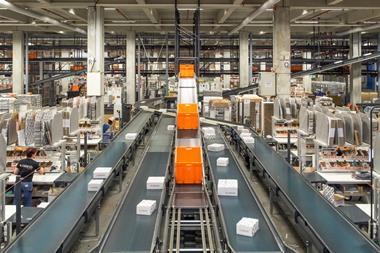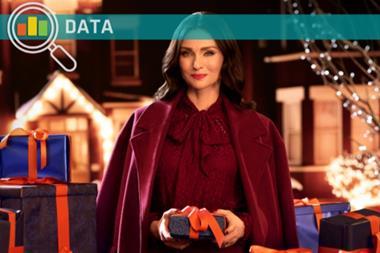The technology show at NRF had all the normal high-tech gadgets, but US retail’s IT leaders are increasingly focused first and foremost on the customer, finds Joanna Perry

When it comes to inspiration for innovation, the first place that Walmart chief information officer Rollin Ford says he looks is to the retail giant’s customers.
The average man on the street probably won’t have much of a view on service-oriented architectures, cloud computing or storage area networks, but they can help to make sure that IT spend is effective as possible.
Speaking at NRF, Ford reasoned that innovation ideas should begin with consumers, with them telling a retailer what they could do better that would make a difference. This exchange leads to business strategy, and only then should technology get involved as the enabler of change.
In general, he says retail is trailing the consumer.
Best Buy chief information officer Neville Roberts broadly agreed, explaining that the core technology retailers use in their businesses just has to run and be stable. His priority and investment is focused anything that involves his customers and Best Buy’s brand promise.
The speed of innovation
Much of Roberts’ focus is on helping Best Buy get speed to value and elongating the innovation cycle. By this he means helping the retailer to capitalise on investments in innovation that it makes as quickly as possible, and to
try and innovate in a way that others find difficult - as once a retailer’s ideas can be copied commoditisation will quickly occur.
Ford added to this point saying: “There are very few secrets out there.” He says that the only competitive advantage a retailer can really maintain in innovation terms is speed. You can’t keep innovation secret for long, so you must ensure that your organisation is one that can quickly embrace change.”
He added: “I think it is about cultivating an environment where everyday you have got to get up and run faster than the next guy.”
But where can the average retail IT director go to find out what their company’s customers want them to be doing?
Technology has, in fact, been an enabler of this and made it much easier than a decade ago.
McDonald’s has just made a change in its US restaurants - making the wifi in them free as of January 16 - after listening to its customers blogging and tweeting about this change being the biggest difference it could make in its restaurants.
“If you rewind 10 years you would get customer panels, and that was your insight,” said Roberts. He went on to explain a demonstration he had seen by a technology supplier in India three months ago where over a day it had mined the internet for insight on Best Buy from social networks.
Exhibitors at the show were showing similar systems, and Oracle general manager and senior vice president for its retail global business unit Duncan Angove spoke of the possibilities for its systems off the back of its acquisition of product data quality firm Silver Creek at the start of the year.
Angove said that Oracle will be able to help retailers enrich their product files with data from social media. This will automate the process that retailers with rating and review services on their website already know is valuable -
harvesting the information that customers tell retailers about their products that they don’t know themselves for use by other customers.
Similarly, ideas can come from the unlikeliest of places within your organisation. In a session on sustainability, SAP chief sustainability officer Peter Graf warned retailers that if they wait for carbon-reduction compliance to hit them, they are missing a trick in terms of reducing their bottom line.
Graf was joined by Walmart senior vice-president for sustainability Matt Kistler who gave the example of a Walmart store manager in North Carolina who came up with the idea of taking the light bulbs out of the vending machines in the staffrooms of all stores as part of the retailer’s initiative to find ways to cut carbon. The result has been an energy saving of more than $1.4m (£858,648) each year.
Being able to collect good ideas is one thing, but IT departments must have the resources and culture where they can be evaluated and nurtured too.
Roberts said that there must be a culture where it is OK for some ideas to fail, and where people have time to think things through. He added that IT departments must be guardians of the budget they receive to develop new ideas. “Fiercely protect your funding throughout the year if innovation is critical to you,” he said.
People power

Perhaps the best reason to promote innovation and be accepting of change also comes from Best Buy, which recently found itself outmanoeuvered on the web by an individual who wrote a piece of software to automate book and DVD recommendations to people on Twitter.
The software searches for tweets about books, and replies to them with links to similar books they might like using Amazon’s recommendation engine. The software developer makes an income from Amazon’s referral programme when someone clicks on the link and buys a book as a result.
In four weeks he got 20,000 people to buy a book this way, and after setting up another Twitter feed for DVDs, facilitated another 30,000 purchases in a month.
Best Buy says it recognises that innovations such as this could see it become irrelevant very quickly, and so as well as encouraging its staff to innovate with customer ideas, it is crucial that it directly allows people to innovate around its proposition as well by publishing its application programme interface.
So in years to come not only will chief information officers be looking to customers for ideas, they will be allowing them to directly innovate on retailers’ behalfs. The game is changing and the importance of keeping up is clearer than ever.


























1 Reader's comment